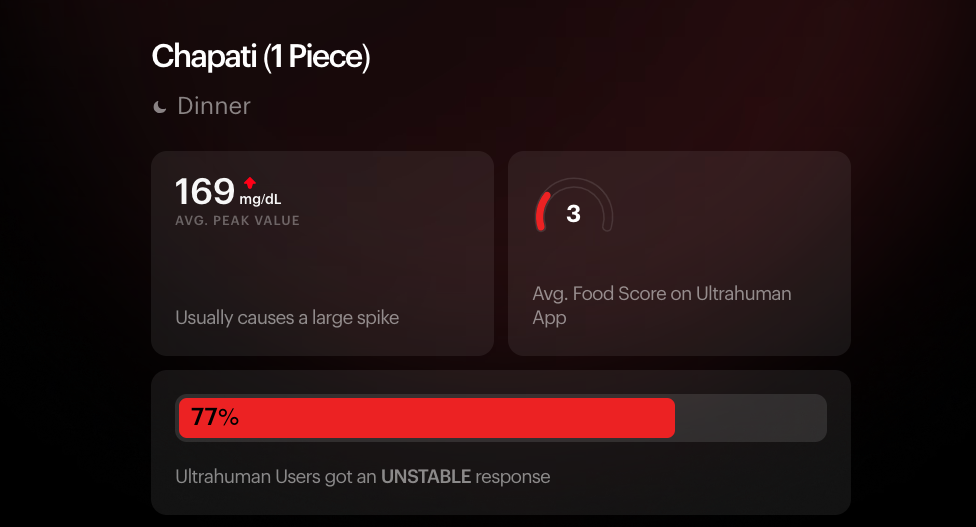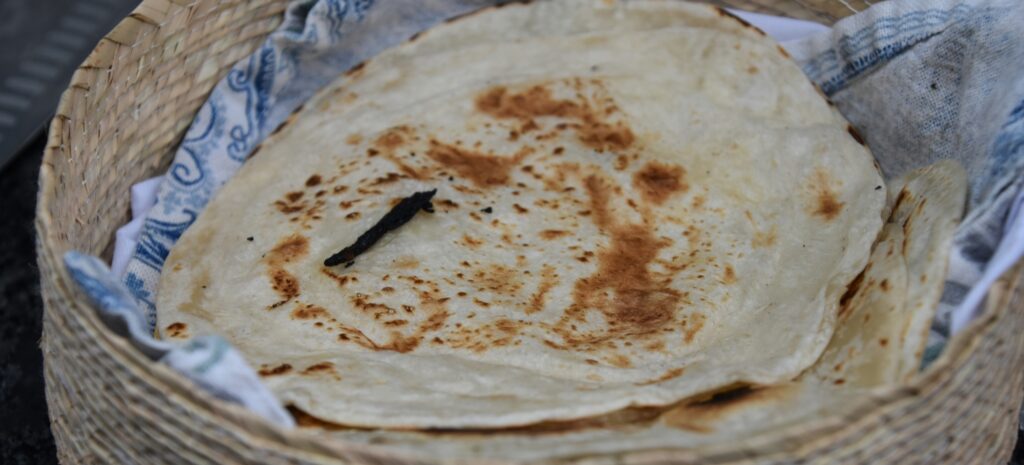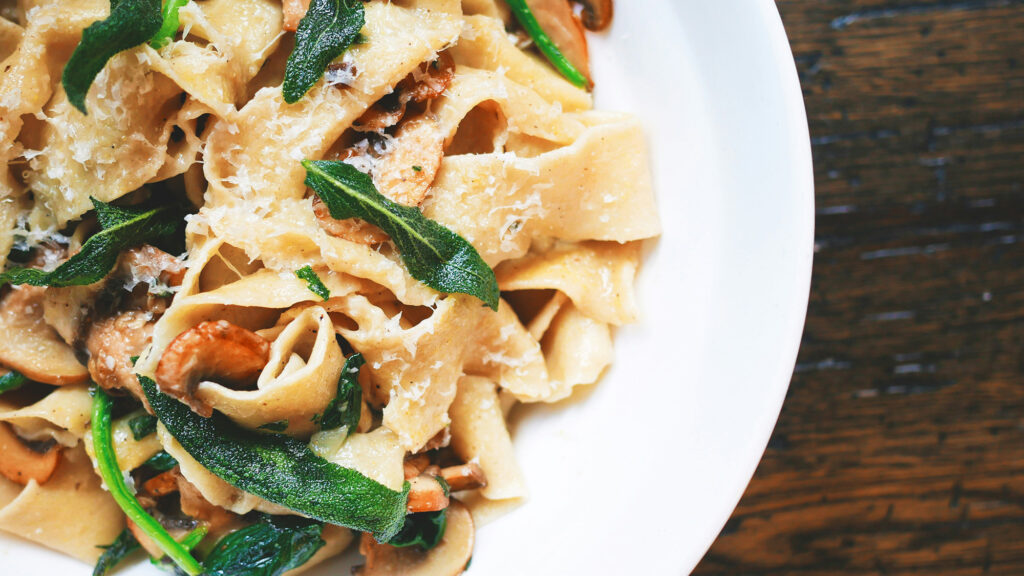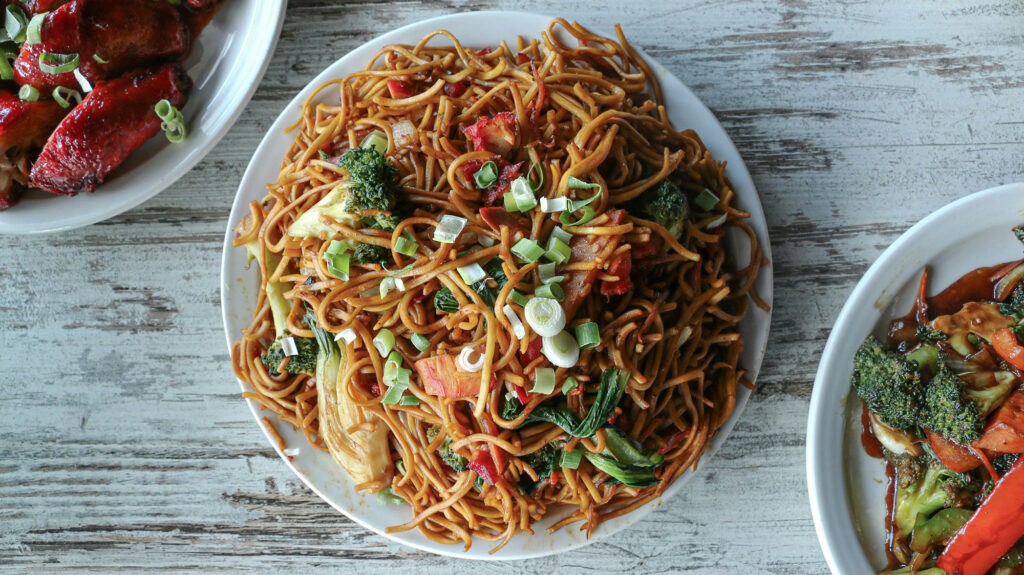Chapatis are a staple across much of India, but for people tracking their blood sugar, chapatis can be problematic.
Traditional wheat chapatis have a moderate to high glycemic index (GI), meaning they can cause a post-meal glucose spike. But that doesn’t mean you have to cut them out entirely. Here’s how to eat chapati in a smarter, more metabolism-friendly way.
The impact of chapati on your blood sugar

According to the Ultrahuman Open Glucose Database, a repository of food logs and anonymous CGM data, chapati caused a large glycemic spike in the majority of users. Ultrahuman’s CGM data shows that a single chapati typically caused an average peak of 169 mg/dL, which is well outside of the healthy range. It scored a 3/10 for glycemic impact, and 77% of users experience unstable glucose responses after eating chapati.
How to reduce the impact of eating chapati
1. Change the flour
Refined wheat flour (maida) spikes glucose fast. Swap it for whole wheat flour (atta), or better yet, go for lower-GI options like:
- Ragi (finger millet): High in fibre and polyphenols.
- Barley: A slow-digesting grain with beta-glucan.
Chickpea (besan): Protein-rich and gluten-free.
2. Add fiber
Mixing psyllium husk into your chapati dough (about 1–2 teaspoons per cup of flour) slows down carbohydrate absorption and helps flatten your glucose curve. You get a softer chapati and better glycemic control.
3. Pair with protein and fats
Pairing chapatis with high-quality proteins (paneer, tofu, eggs) or healthy fats (ghee, avocado, olive oil) blunts the blood sugar rise by slowing the absorption of food into your blood stream. Avoid eating chapati solo or with starchy sides.
4. Eat earlier in the day
Your insulin sensitivity is higher earlier in the day, which means eating chapatis at breakfast or lunch leads to a more stable glucose response than having them at dinner. If you’re going to eat carbs, do it when your body is primed to handle them.
5. Portion control
Even with smarter ingredients, quantity matters. Eat fewer chapatis to keep spikes down, and as mentioned, think about leafy greens or healthy protein to minimize big spikes.
Conclusion
You don’t need to quit chapati — you just need to outsmart it. By switching up your ingredients, eating it in the right context, and watching your timing, you can enjoy chapatis without sabotaging your blood sugar. Use a CGM to test your personal response and dial in what works for you.








